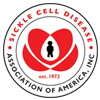Trusted Resources: Evidence & Education
Scientific literature and patient education texts
Intentional and Unintentional Nonadherence to Hydroxyurea Among People With Sickle Cell Disease: A Qualitative Study
source: Blood Advances
year: 2020
authors: Jason R. Hodges, Shannon M. Phillips, Sarah Norell, Chinonyelum Nwosu, Hamda Khan, Lingzi Luo, Sherif M. Badawy, Allison King, Paula Tanabe, Marsha Treadwell, Lucia Rojas Smith, Cecelia Calhoun, Jane S. Hankins, Jerlym Porter
summary/abstract:Hydroxyurea is an efficacious treatment for sickle cell disease (SCD), but adoption is low among individuals with SCD. The objective of this study was to examine barriers to patients’ adherence to hydroxyurea use regimens by using the intentional and unintentional medication nonadherence framework. We interviewed individuals with SCD age 15 to 49.9 years who were participants in the Sickle Cell Disease Implementation Consortium (SCDIC) Needs Assessment. The intentional and unintentional medication nonadherence framework explains barriers to using hydroxyurea and adds granularity to the understanding of medication adherence barriers unique to the SCD population. In total, 90 semi-structured interviews were completed across 5 of the 8 SCDIC sites. Among interviewed participants, 57.8% (n = 52) were currently taking hydroxyurea, 28.9% (n = 26) were former hydroxyurea users at the time of the interview, and 13.3% (n = 12) had never used hydroxyurea but were familiar with the medication.
Using a constructivist grounded theory approach, we discovered important themes that contributed to nonadherence to hydroxyurea, which were categorized under unintentional (eg, Forgetfulness, External Influencers) and intentional (Negative Perceptions of Hydroxyurea, Aversion to Taking Any Medications) nonadherence types. Participants more frequently endorsed adherence barriers that fell into the unintentional nonadherence type (70%) vs intentional nonadherence type (30%). Results from this study will help SCD health care providers understand patient choices and decisions as being either unintentional or intentional, guide tailored clinical discussions regarding hydroxyurea therapy, and develop specific, more nuanced interventions to address nonadherence factors.
organization: St. Jude Children’s Research Hospital, USA; Medical University of South Carolina, USA; University of Illinois, USA; Washington University in St. Louis, USA; Ann & Robert H. Lurie Children’s Hospital of Chicago, USA; Duke University, USA; University of California San Francisco Benioff Children’s Hospital Oakland, USA; RTI International, USADOI: doi.org/10.1182/bloodadvances.2020001701
read more
Related Content
-
Special Needs Factsheet: For TeachersWhat Teachers Should Know: Sickle cell ...
-
With Cincinnati Children’s Hospital – What is Sickle Cell Trait?https://www.youtube.com/watch?v=MDepyJP5...
-
Living With Sickle Cell DiseaseIf you or your child has sickle cell dis...
-
Find Patient Assistance With FundFinder, The Patient Access Network (PAN) FoundationAre you tired of monitoring the status o...
-
Warren rapper draws influence from sickle cell diagnosisSeventeen-year-old Ja’Vionte “Tae Mo...
-
Sickle Cell – Anne Alfahttps://www.youtube.com/watch?v=zOkE6rQg...
-
How a Man and Woman, Both with a Sickle Cell Anemia Mutation, Had a Healthy ChildA man and woman who are both carriers of...
To improve your experience on this site, we use cookies. This includes cookies essential for the basic functioning of our website, cookies for analytics purposes, and cookies enabling us to personalize site content. By clicking on 'Accept' or any content on this site, you agree that cookies can be placed. You may adjust your browser's cookie settings to suit your preferences. More Information
The cookie settings on this website are set to "allow cookies" to give you the best browsing experience possible. If you continue to use this website without changing your cookie settings or you click "Accept" below then you are consenting to this.




 +myBinder
+myBinder
